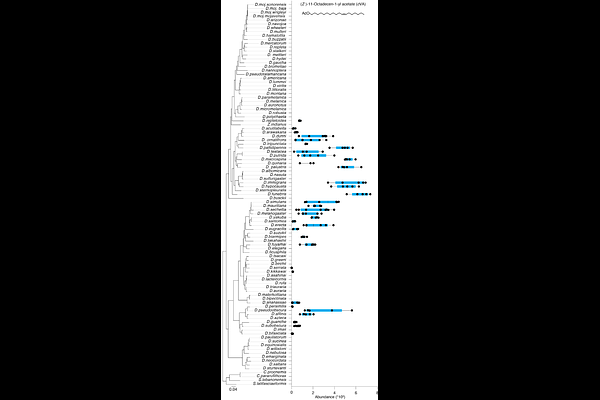Quantitive variation of male and female-specific compounds in 99 drosophilid flies

Quantitive variation of male and female-specific compounds in 99 drosophilid flies
Khallaf, M.; Diaz-Morales, M.; Hansson, B. S.; Knaden, M.
AbstractVariation in sex pheromones is regarded as one of the causes of reproductive isolation and speciation. We recently identified 51 male- and female-specific compounds, many of which function as sex pheromones, in 99 drosophilid species (1). Here, we report that despite many of these compounds being shared between species, their quantities differ significantly. For example, although 34 drosophilid species share the male-specific compound cis-vaccenyl acetate (cVA), which plays a critical role in regulating various social and sexual behaviors, the amount of cVA can differ by up to 600-fold between different species. Additionally, we found 7-tricosene, the cuticular hydrocarbon pheromone, present in 35 Drosophila species. Our findings indicate that 7-tricosene is equally present in both sexes of 14 species, more abundant in males of 14 species, and more abundant in females of 7 species. We provide raw data on the concentration of potential pheromone components in the 99 drosophilids, which can provide important insights for further research on the behavior and evolution of these species. Quantitative variations highlight species-specific patterns, suggesting an additional mechanism for reproductive isolation built on specific combinations of compounds at set concentrations.